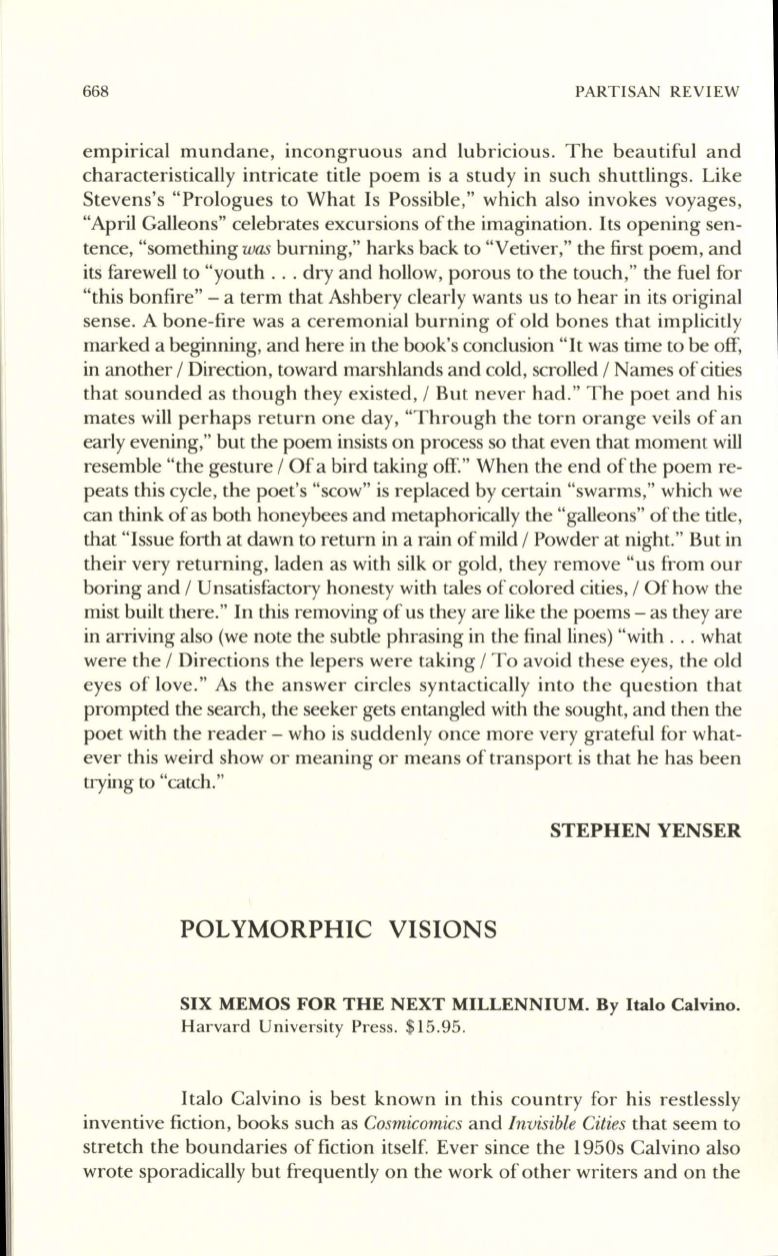
668
PARTISAN REVIEW
empirical mundane, incongruous and lubricious. The beautiful and
characteristically intricate title poem is a study in such shuttlings. Like
Stevens's "Prologues to What Is Possible," which also invokes voyages,
"April Galleons" celebrates excursions of the imagination. Its opening sen–
tence, "something
was
burning," harks back to "Vetiver," the first poem, and
its farewell to "youth ... dry and hollow, porous to the touch ," the fuel for
"this bonfire" - a term that Ashbery clearly wants us to hear in its original
sense. A bone-fire was a ceremonial burning of old bones that implicitly
marked a beginning, and here in the book's conclusion "It was time to be off,
in
another / Direction, toward marshlands and cold, scrolled / Names of cities
that sounded as though they existed, / But never had." The poet and his
mates will perhaps return one day, "Through the torn orange veils of an
early evening," but the poem insists on process so that even that moment
will
resemble "the gesture / Of a bird taking off." When the end of the poem re–
peats this cycle, the poet's "scow" is replaced by certain "swarms," which we
can think of as both honeybees and metaphorically the "galleons" of the title,
that "Issue forth at dawn to return in a rain of mild / Powder at night." But in
their very returning, laden as with silk or gold, they remove "us from our
boring and / Unsatisfactory honesty with tales of colored cities, / Of how the
mist built there." In this removing of us they are like the poems - as they are
in arriving also (we note the subtle phrasing in the final lines) "with . .. what
were the / Directions the lepers were taking / To avoid these eyes, the old
eyes of love." As the answer circles syntactically into the question that
prompted the search, the seeker gets entangled with the sought, and then the
poet with the reader - who is suddenly once more very grateful for what–
ever this weird show or meaning or means of transport is that he has been
trying to "catch."
STEPHEN YENSER
POLYMORPHIC VISIONS
SIX MEMOS FOR THE NEXT MILLENNIUM. By Italo Calvino.
Harvard University Press. $ 15.95.
Italo Calvino is best known in this country for his restlessly
inventive fiction, books such as
Cosmicomics
and
Invisible Cities
that seem to
stretch the boundaries of fiction itself. Ever since the 1950s Calvino also
wrote sporadically but frequently on the work of other writers and on the


